* The numbers are taken from the National Foundation for Ectodermal Dysplasias (NFED) database and are not based on medical literature. There are more than 180 distinct types of ectodermal dysplasias cited in the literature.
1. Ectodermal Dysplasia, Specific Type is Unknown by the NFED – 3,168 People
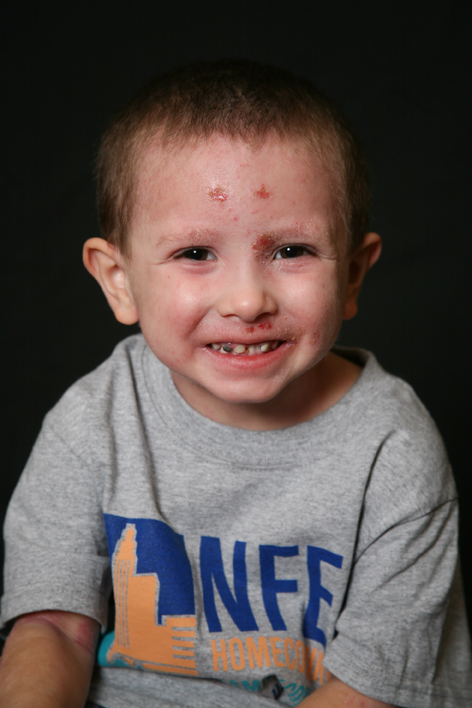
Almost half of the people on the NFED database reported having “ectodermal dysplasia” and didn’t report being diagnosed with a specific type. This is why the NFED has worked to develop a classification system for the ectodermal dysplasias which would help improve diagnosis. Without a specific diagnosis, affected individuals can still treat their symptoms. However, it’s important to know what specific type affects the individual for family planning purposes in order to stand the inheritance risks.
2. X-linked Hypohidrotic Ectodermal dysplasia (XLHED) – 1,763 people
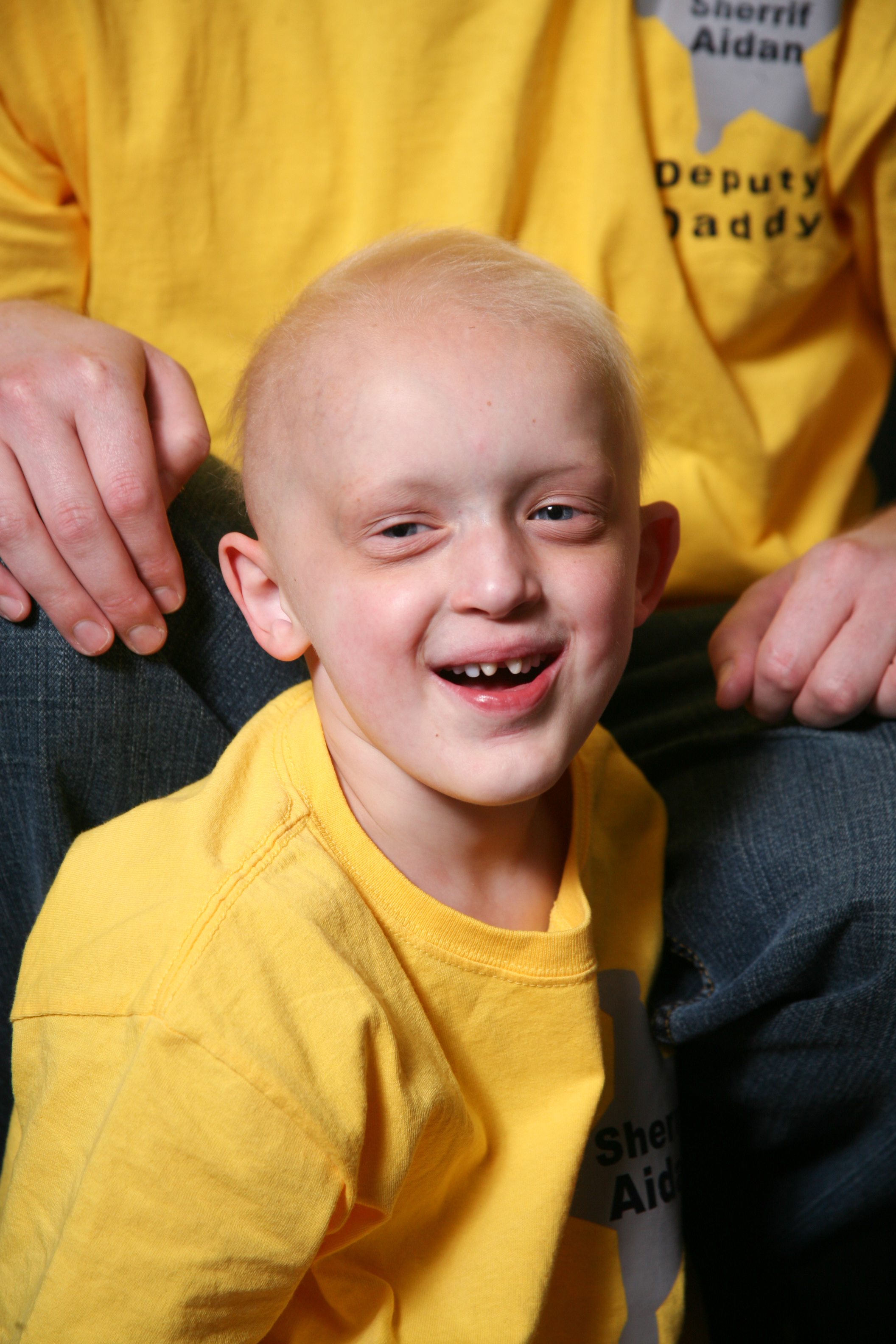
Hypohidrotic ectodermal dysplasia (HED) is characterized by a reduced ability to sweat, missing teeth, and fine sparse hair. Individuals affected by HED share a similar facial appearance with thin, dark skin beneath the eye with extra folds or wrinkles, a depressed “saddle” nose, small narrow jaw, and small pointed teeth. Eruption of the teeth may be delayed, or only a few teeth may erupt. Additional features include dry eyes, eczema, asthma, ear wax impaction, dry nasal concretions, respiratory illness, sinusitis, or sparseness of saliva. HED may be inherited in one of three patterns: X-linked recessive, autosomal recessive and autosomal dominant.
3. Hypohidrotic Ectodermal Dysplasia (Patients didn’t know which of the 3 types they have. Typically, 95% of HED is XLHED.) – 900
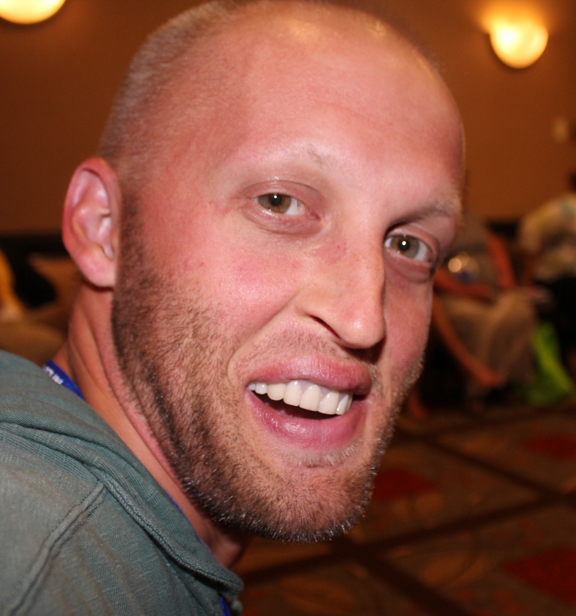
See description for XLHED.
4. Ectrodactyly-Ectodermal Defects-Clefting (EEC) Syndrome – 336 people
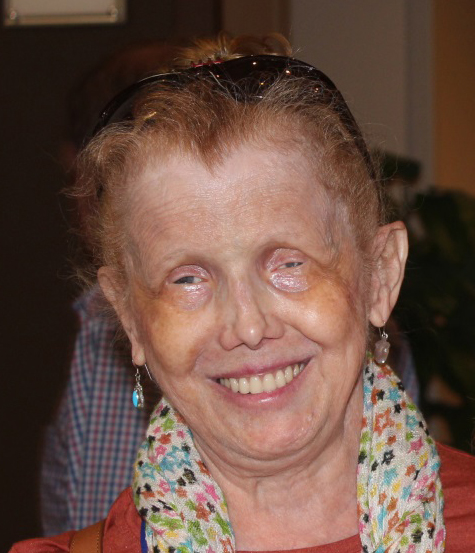
EEC syndrome is a type of ectodermal dysplasia in which there is congenital absence of some of the fingers or toes, features of ectodermal dysplasia, and cleft lip or palate. While both hands and both feet are usually involved, exceptions have been noted. Abnormalities in the development of tear ducts can cause excessive tearing or a failure of the tear glands to develop may cause inflammation of the eyelids, cornea, and conjunctiva. Intolerance of light (photophobia) may occur. Skin and hair may be more lightly pigmented than normal, and a variety of hair problems may be experienced, from sparse hair to thick, unruly hair. The nails in some, but not all, people with the disorder may be abnormal. Various renal problems have been identified in individuals affected by EEC, but great variation in the type and severity exist. The most obvious abnormalities of the oral cavity include cleft palate with or without cleft lip. Congenital absence of teeth and pointed teeth are common. Conductive hearing loss (not nerve deafness) even without ear malformations has been noted in some individuals. EEC syndrome is inherited as an autosomal dominant disorder.
5. Clouston Syndrome– 194 people
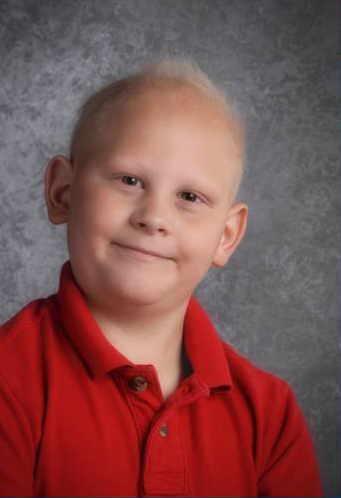
Clouston syndrome is characterized by thick nails that grow slowly, sparse hair, thickness of the skin over the palms and soles, dark skin over the knees and elbows, white patches on the inside of the cheeks, thin eyebrows (outer portion only), and a reduced number of eyelashes. Individuals with this type have normal teeth and sweat normally. Intelligence is normal. Clouston syndrome is frequently called hidrotic ectodermal dysplasia because affected individuals sweat normally and exhibit no heat intolerance. Clouston syndrome is inherited as an autosomal dominant disorder.
6. Ankyloblepharon-Ectodermal Dysplasia-Clefting (AEC Syndrome) – 159 people
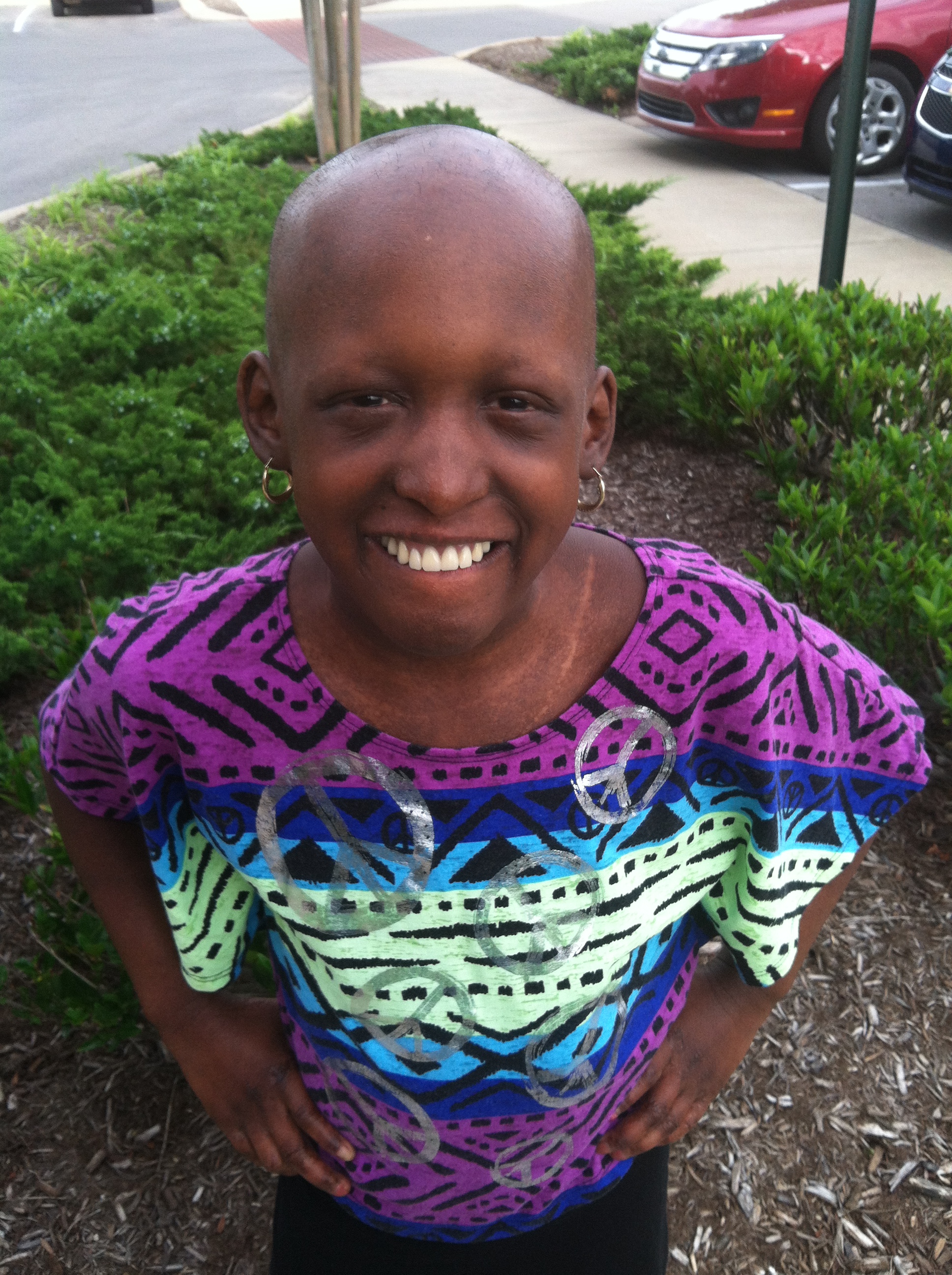
AEC syndrome, which includes the Rapp-Hodgkin syndrome, is characterized by ankyloblepharon (fused eyelids); sparse, wiry hair; skin erosions; unique pigmentary changes; nail changes; dental changes; subjective decrease in sweating capacity; and cleft lip/palate. Nearly 100% of affected babies have superficial skin erosions that range from very limited to severe, even life-threatening, full body involvement. Scalp erosions at birth and during infancy are typical and, when severe, can lead to scarring alopecia and hypotrichosis. Limb anomalies are also common. AEC syndrome is inherited as an autosomal dominant disorder.
7. Tooth and Nail Syndrome – 141 people
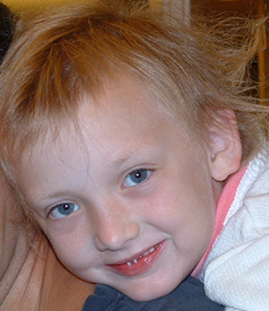
Individuals with the “tooth and nail” syndrome sweat and tolerate heat normally. Nails are spoon-shaped (concave), thin, and grow slowly. Many teeth are congenitally absent, but rarely are more than 20 permanent teeth missing. The teeth which are present may be peg-shaped or smaller than normal. Baby teeth may be retained until adulthood if they have no permanent successors. The density of scalp hair varies from normal to sparse, and the hair itself may be lightly pigmented. No other medical problems have been noted in patients affected by “tooth and nail” syndrome. Intelligence is normal. There are at least two types of “tooth and nail” syndrome: the Fried syndrome and the Witkop syndrome. The Fried syndrome is an autosomal recessive disorder, while the Witkop syndrome is an autosomal dominant disorder. Consequently, family history may be necessary to know the type a particular individual has.
8. Focal Dermal Hypoplasia (FDH) (also known as Goltz syndrome) – 94 people
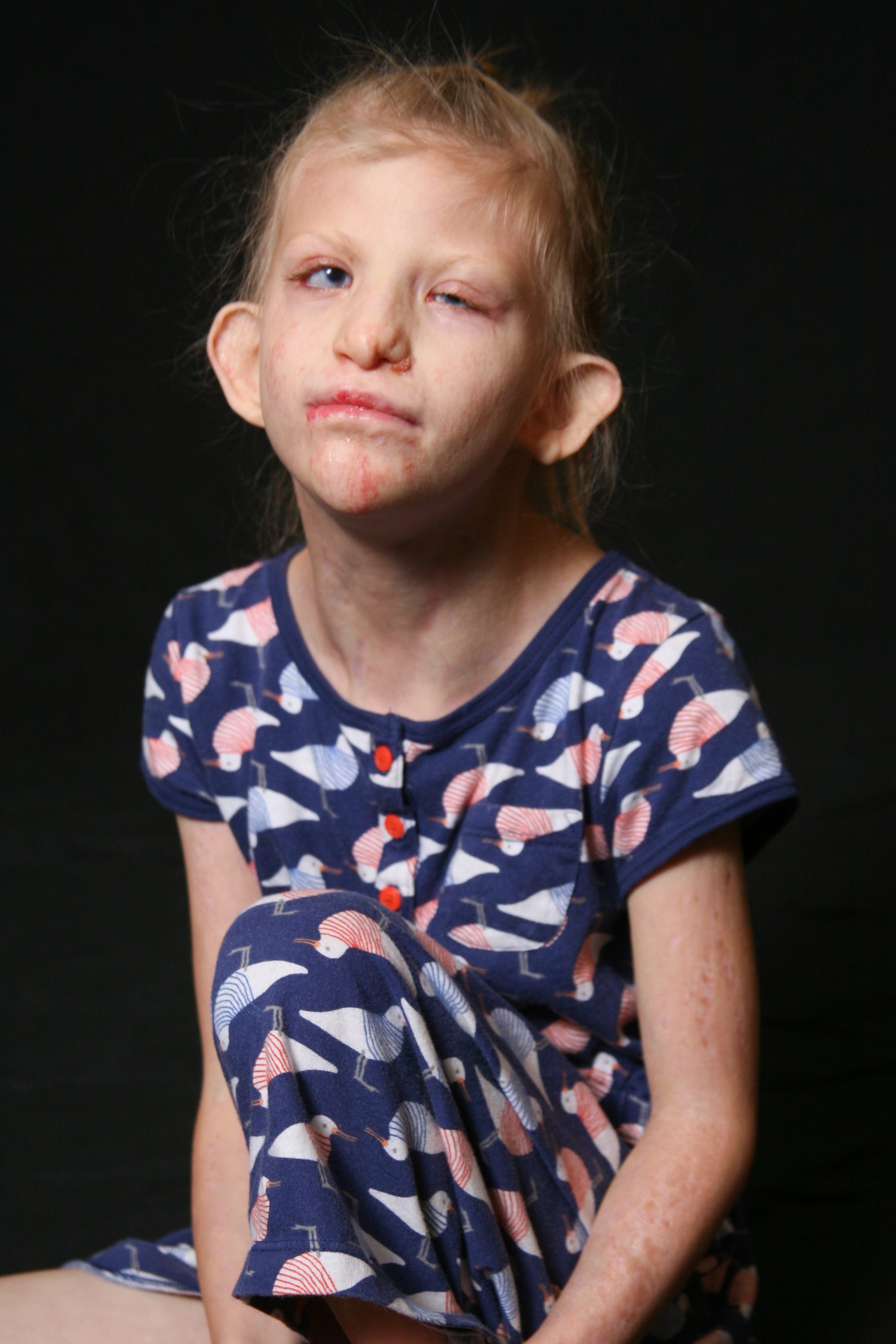
Goltz syndrome has characteristic findings in the skin, ranging from small areas of absent skin to small areas of thin skin, especially on the scalp. The areas of defective skin may be abnormally pigmented, and fatty tissue may protrude through them. Frequently, affected individuals have lumps of raised tissue on the lips, gums, and base of tongue and around the mouth, anus, vulva, groin and arm pits. Affected individuals have absent, poorly developed, spoon-shaped, or grooved nails. While some affected individuals do not sweat normally over their entire bodies, their palms and soles may sweat excessively. Individuals with Goltz syndrome may have patches of hair loss on the scalp and pubis. Dental abnormalities may include irregular position of teeth, poor enamel, and malformed teeth. Other findings include asymmetry of the face, malformed ears, pointed chin, and wide-set eyes. Abnormal development of the eye, small eyes, and colobomas of the iris and the choroids, may occur. Frequently, fusion of fingers and toes and other abnormalities of the fingers or toes may be noted. Hearing loss has been reported, as have heart and kidney defects. Hernias and mental retardation are occasional features. It is usually, but not always, X-linked dominant (lethal in males). About 90% of affected individuals are female.
9. Incontinentia Pigmenti (IP) – 74 people
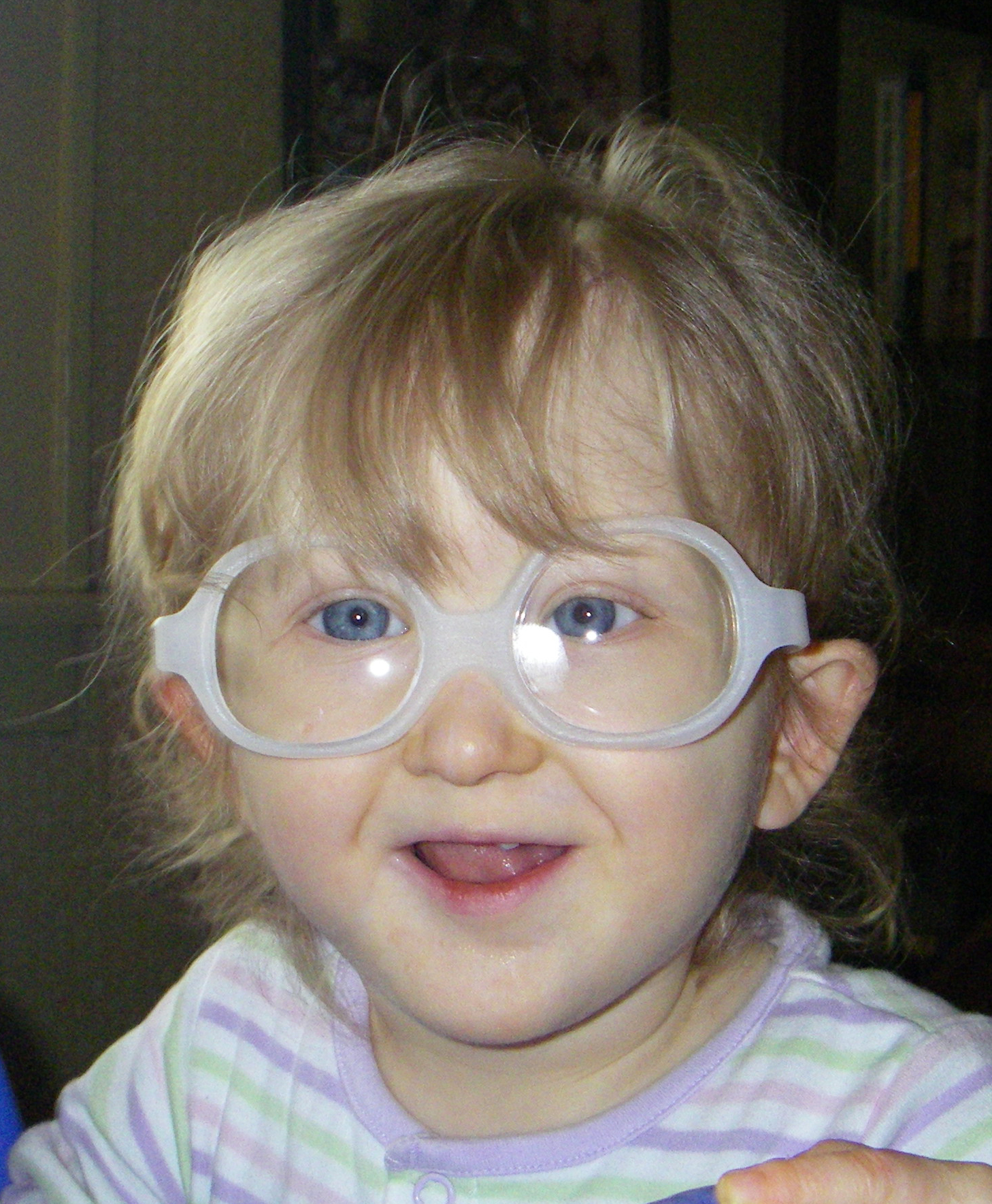
IP is a skin disorder characterized by blister-like lesions over the skin shortly after birth. There is great dispute in the medical world about whether or not IP is an ectodermal dysplasia. The lesions gradually change character, and marbled hyperpigmentation appears in early childhood. The areas of hyperpigmentation may fade during the second and third decades of life. By mid-life, affected adults have mild pigmentary changes only, including small areas of decreased pigmentation. People with IP may have missing or malformed teeth, patches of absent scalp hair, some learning disabilities, occasional seizures, and various problems with their eyes (the retinas) and their bones. Their nails also may be poorly formed. IP affects females almost exclusively (99%) and is caused by a gene carried on the X-chromosome that is lethal to males who inherit it.
10. Autosomoal Dominant Hypohidrotic Ectodermal Dysplasia (ADHED) – 58 people
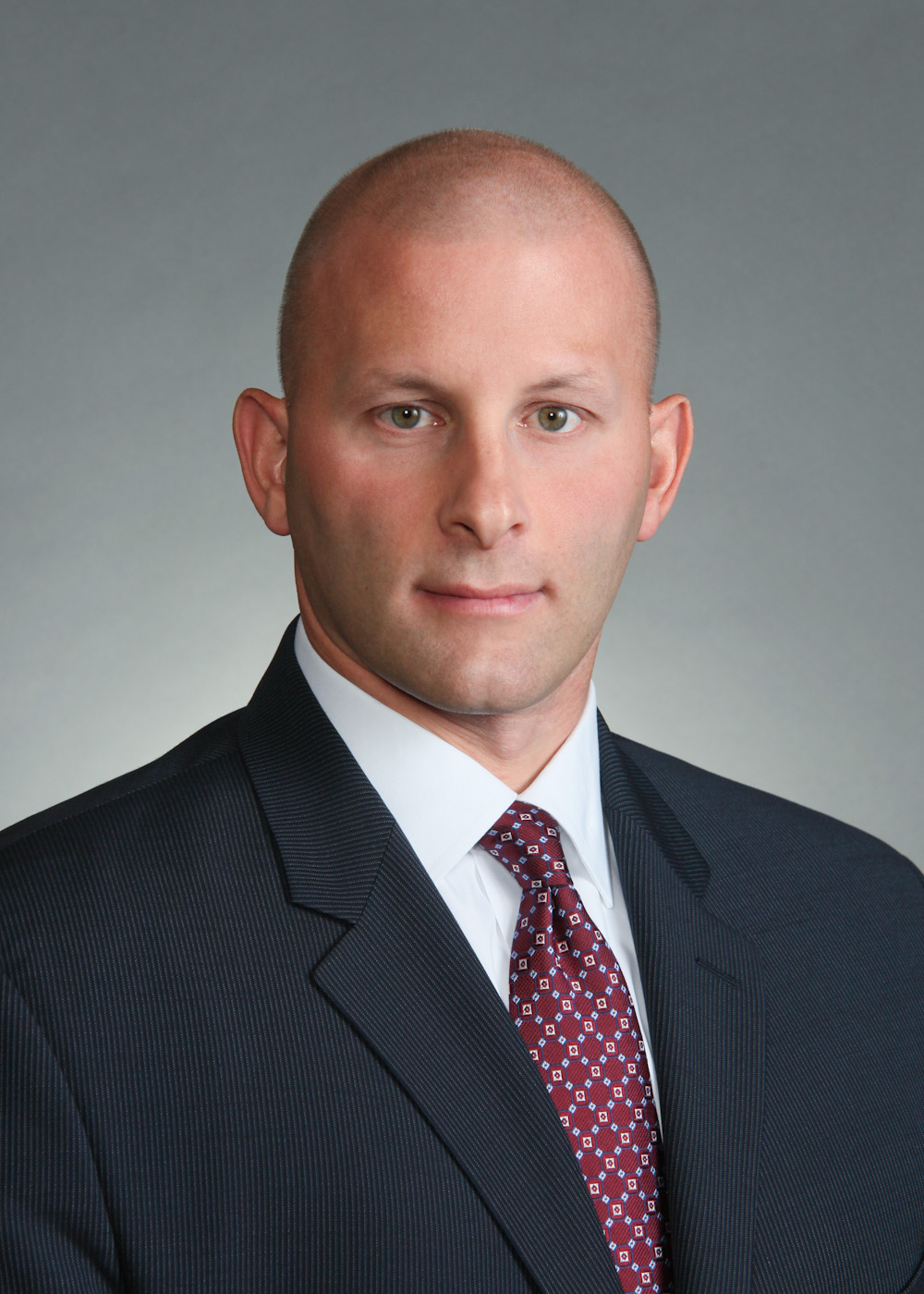
See description for XLHED.
February is Ectodermal Dysplasias Awareness Month. NFED.org
Reblogged this on EEC Chick and commented:
Here’s a list of the 10 most common kinds of ectodermal dysplasias among people who are registered with the NFED. I find it interesting that the largest group is actually “type unknown”.
When I was growing up, I knew about the NFED and a little about ectodermal dysplasias. From what I saw in the newsletters that came in the mail, it seemed like everyone with ectodermal dysplasia had HED. I felt like I was the oddball with EEC. I knew there were others out there, but not many.
I empathize with those who do not have a clear diagnosis. It must be frustrating not really knowing what to expect, or whether a particular issue you’re having is related to ectodermal dysplasias or not. Even though I knew my diagnosis early on, we did not realize everything that was associated with it, because at the time, we only knew one other person who had it. Now, of course, I realize that just about every health issue I’ve had is related to my syndrome.
Anyway, on with the list!
[…] Top 10* Most Common Ectodermal Dysplasias […]
[…] Top 10 Most Common Ectodermal Dysplasias […]
[…] Top 10 Most Common Ectodermal Dysplasias […]
Very good informational blog on the vast array if dysplasias. Part of my dfysability is associated with AHED.
*Please edit my name de plumb * Hannah Bradford Stuart*
Your blog appears promising; I agree that classification of familial dysplasias is crucial to educate, and plan for early management of themultifaceted nature of these syndromes. I look forward to reading your updates.
Sincerely,HBS.
[…] Top 10* Most Common Ectodermal Dysplasias […]
[…] Top 10* Most Common Ectodermal Dysplasias […]
In Kentucky there was a children’s hospital that would help with the cost of the dental treatment for these children but my Son has moved to Nevada and his two small girls have been told his dental issue are for sure passed on to his daughters . The dental issue and skin and hair plus lack of sweat glands with the ear wax problem are all a long family history for us . With the 2 girls being so close in age they both will need treatment almost at the same time is there any financial assistance in Reno Nevada like we had in Louisville Kentucky… can you recommend a dentist and or pediatrician In the Reno area … thank you
Hi, Jan. We do offer a Treatment Assistance Program that he could apply for the girls’ dental care. You can learn more and apply here: https://nfed.org/treat/treatment-assistance-program/. We’re not sure about any other assistance programs Nevada might have. We do have Dental Treatment Centers throughout the country. You can check here to see if there’s a location that might work: https://nfed.org/treat/dental-treatment-options/dental-treatment-centers/. Also, here’s an article with tips on how to find a doc: https://nfed.org/blog/tips-for-finding-a-doctor-or-dentist/. To request a list of dentists and doctors for Nevada, please fill out this form and we’re happy to send it to you: https://nfed.org/about-us/contact-us/. Hope this is helpful! Call our NFED office at 618-566-2020 should you need any other help. We’d be glad to talk to you. ~ Jodi, NFED, Director, Marketing and Communications.
In Kentucky there was a children’s hospital that would help with the cost of the dental treatment for these children but my Son has moved to Nevada and his two small girls have been told his dental issue are for sure passed on to his daughters . The dental issue and skin and hair plus lack of sweat glands with the ear wax problem are all a long family history for us . With the 2 girls being so close in age they both will need treatment almost at the same time is there any financial assistance in Reno Nevada like we had in Louisville Kentucky… can you recommend a dentist and or pediatrician In the Reno area … thank you I have never asked this before and this is saying I have
I have Ectodermal dysplasia, but my husband does not. His genes are healthy and strong. I do have my own hair ( almost shoulder length) and nails grow long. Anyways. I was wandering what the percentage is that our children will be effected by it? Can they still get it if only one parent has it? And is that something that effects fertility?
Hi, Juli. You ask all good questions. I encourage you to call our office at 618-566-2020 so we can talk through your questions. We encourage you to see a geneticist to learn which of the 180 types (https://nfed.org/learn/types/) of ectodermal dysplasia affects you. Knowing which type will enable the geneticist to tell you what your chances are of passing the gene to a child. How it’s passed is determined by the type. You can learn more here: https://nfed.org/learn/genetics-inheritance/. Here’s an article we posted about a survey we conducted about women affected by ectodermal dysplasia. You can find information about fertility here: https://nfed.org/learn/library/female-specific-issues-ectodermal-dysplasias/. Let us know if we can help you further. We are here to help. ~ Jodi, NFED, Dir. of Marketing and Communications
Ectodermal dysplasia and learning disabilities do they corroleate and thank you it was totally insightful can I more forwarded to my email
Hello. Thank you for your question. For most of the 100 types of ectodermal dysplasias, there is no correlation between ectodermal dysplasia and learning disabilities. There are some types that do. Which specific type are you wondering about? Thanks, Jodi, NFED, Director, Marketing and Communications
Seeing all this now, like coming to know about me at this my age (22) is a lot for me. I knew like some hours ago about this genetic disoder. Am a Nigerian and I hope to get to speak to someone soon before I go out of my mind.
Thank you for reaching out to us. I’m glad you found our website. If you would like to speak to someone on our staff, please email us at info@nfed.org and Kelley can help you. We know it can be overwhelming when you first learn and get a diagnosis. There’s a lot of useful information on our website, too. Know that all will be well. Our staff is here to help. ~ Jodi, Director, Marketing and Communication, NFED
I am a 53 year old female with Oligodontia (15 of 32 missing teeth) and have not had treatment to replace my teeth. I remember when I was young 12 or younger that my parents had taken me to a “dentist” and there was serious discussions afterward about finances and waiting until I was older and possible surgical intervention. Nothing ever came of it. I now have 13 teeth left two of which are still baby teeth. I did have braces at one point however the orthodontist had to add composite resin to my teeth to be large enough for the braces. And that is a 40 year old treatment at this point and are broken and stained. I cannot figure where to get help for both affording the treatment I may ultimately need and to find a group of people aware of this disorder that I may trust. I live in the Shreverport, Louisiana area and cannot find anyone to schedule with. Do you have any insights that my help guide me?
Hello, Tara. I had replied to an email that you sent to our office. I would love to hear back from you and assist you further.
Contact me at kelley@nfed.org and we can arrange a time to chat by phone.